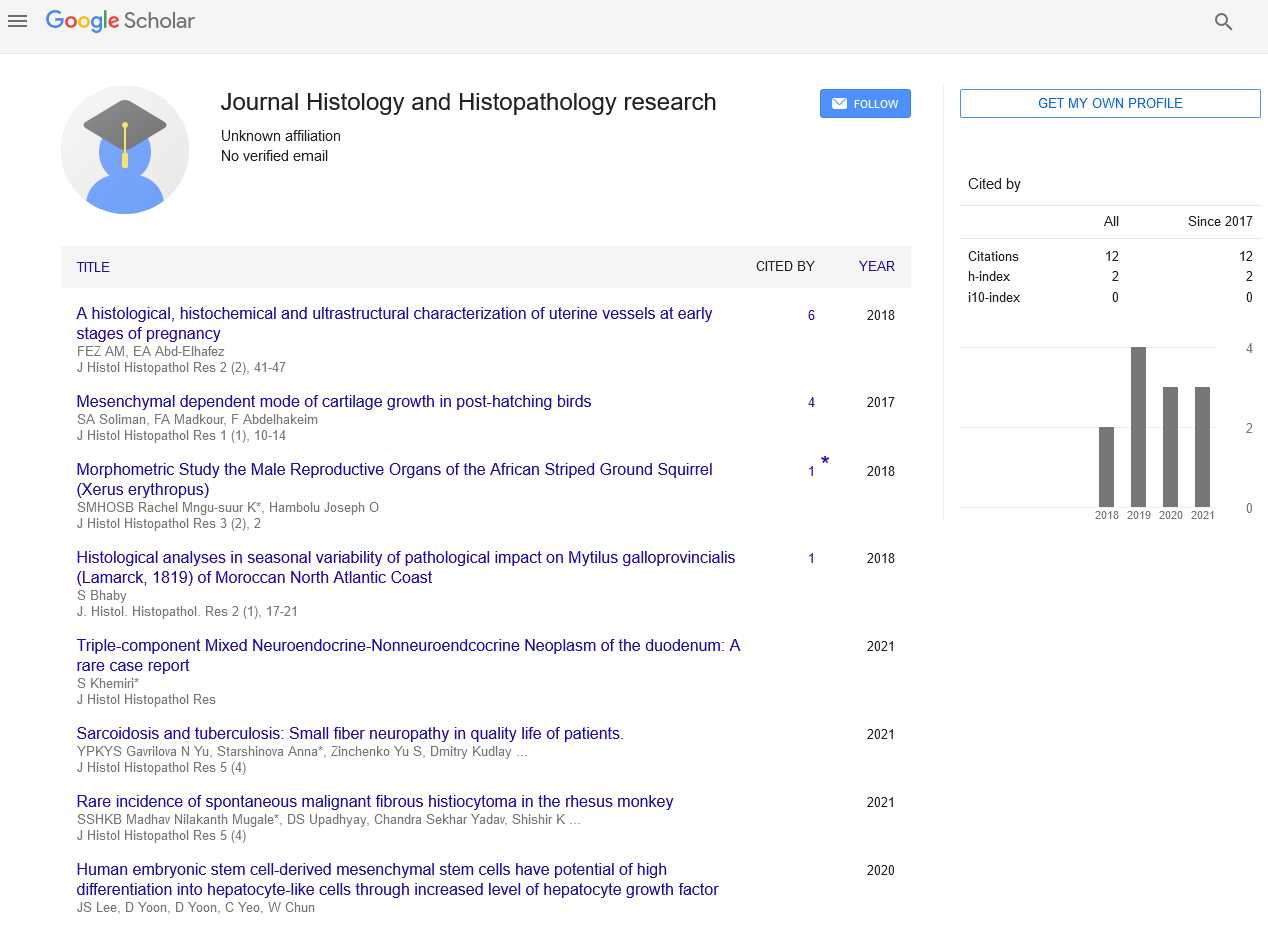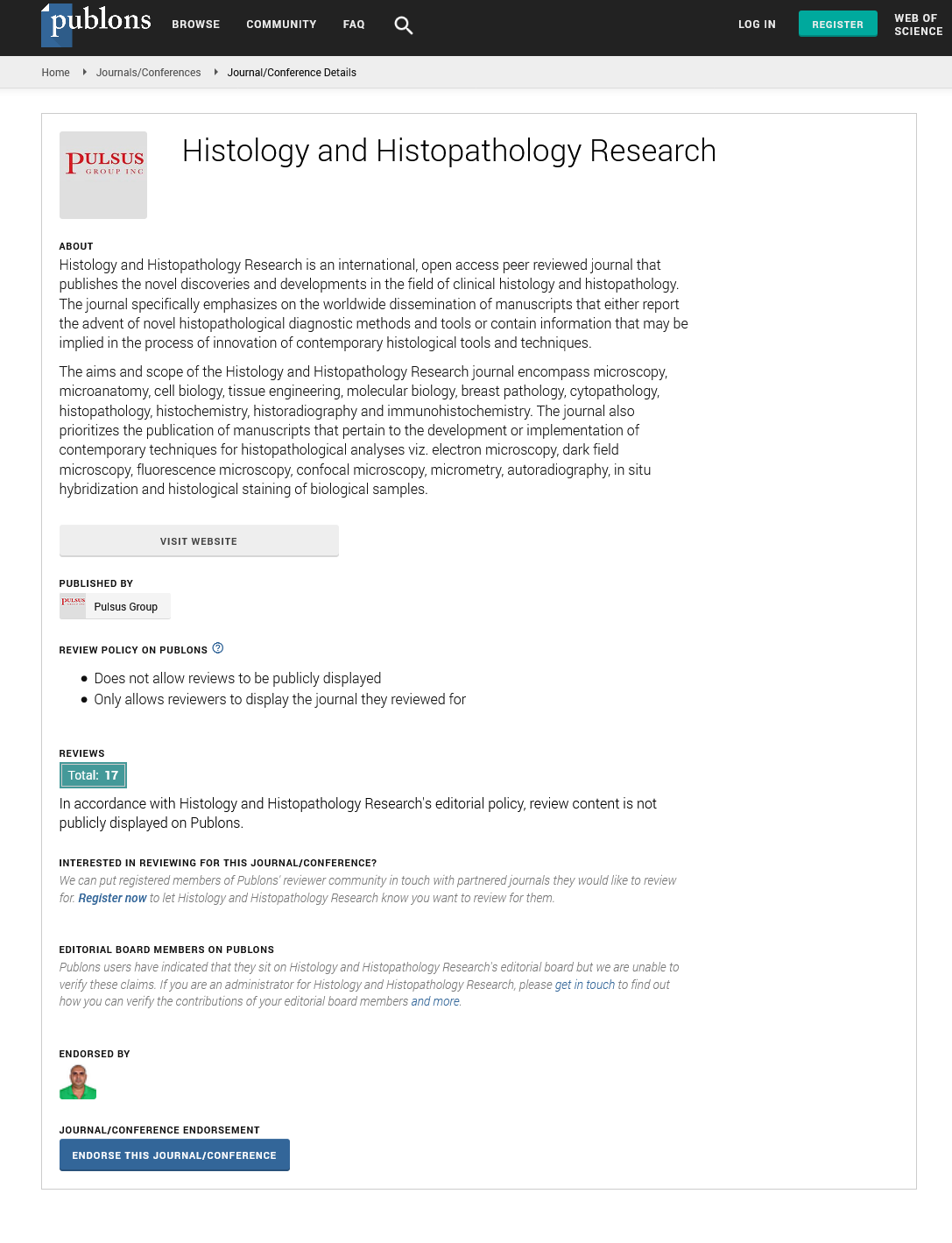Research and developments in tissue engineering
Received: 07-Jul-2021 Accepted Date: Jul 21, 2021; Published: 28-Jul-2021
Citation: Haddel M. Research and developments in tissue engineering . J Histol Histopathol 2021;5(2)
This open-access article is distributed under the terms of the Creative Commons Attribution Non-Commercial License (CC BY-NC) (http://creativecommons.org/licenses/by-nc/4.0/), which permits reuse, distribution and reproduction of the article, provided that the original work is properly cited and the reuse is restricted to noncommercial purposes. For commercial reuse, contact reprints@pulsus.com
Description
Tissue engineering is a biomedical designing discipline that utilizes a mix of cells, designing, materials strategies, and reasonable biochemical and physicochemical components to re-establish, keep up with, improve, or supplant various sorts of organic tissues. Tissue planning consistently incorporates the use of cells put on tissue systems in the course of action of new sensible tissue for a clinical explanation, be that as it may, isn't limited to applications including cells and tissue platforms. While it was once orchestrated as a sub-field of biomaterials, having filled in increase and significance it will overall be considered as a field in isolation.
Improvements in the multidisciplinary field of tissue designing have yielded an original arrangement of tissue new parts and execution techniques. Logical advances in biomaterials, immature microorganisms, development and separation factors, and biomimetic conditions have set out remarkable open doors to create or work on existing tissues in the research Centre from mixes of designed extracellular networks, cells, and organically dynamic atoms. Among the significant difficulties currently confronting tissue designing is the requirement for more unpredictable usefulness, biomechanical strength, and vascularization in lab developed tissues bound for transplantation. The proceeded with accomplishment of tissue designing and the inevitable improvement of genuine human new parts will develop from the assembly of designing and fundamental exploration propels in tissue, network, development factor, immature microorganism, and formative science, just as materials science and bioinformatics.
Cells are one of the fundamental parts for the accomplishment of tissue designing methodologies. Tissue designing uses cells as techniques for the creation/substitution of new tissue. Models incorporate fibroblasts utilized for skin fix or restoration, chondrocytes utilized for ligament fix, and hepatocytes utilized in liver emotionally supportive networks. Cells can be utilized alone or with help lattices for tissue designing applications. A satisfactory climate for advancing cell development, separation, and coordination with the current tissue is a basic factor for cell-based structure blocks. Control of any of these cell measures makes elective roads for the improvement of new tissue. Stem cells are undifferentiated cells with the capacity to separate in culture and lead to various types of specific cells. Foundational microorganisms are isolated into "grown-up" and "early-stage" undifferentiated organisms as per their source. While there is as yet a huge moral discussion identified with the utilization of undeveloped foundational microorganisms, it is believed that another elective source – incited pluripotent undifferentiated cells – might be valuable for the maintenance of ailing or harmed tissues, or might be utilized to develop new organs.
In tissue engineering, a bioreactor is a gadget that endeavours to recreate a physiological climate to advance cell or tissue development in vitro. A physiological climate can comprise a wide range of boundaries like temperature, pressing factor, oxygen or carbon dioxide focus, or osmolality of liquid climate and it can reach out to a wide range of natural, synthetic, or mechanical upgrades. Accordingly, there are frameworks that may incorporate the utilization of powers like electromagnetic powers, mechanical pressing factors, or liquid pressing factors to the tissue. These frameworks can be a few-dimensional arrangement. Bioreactors can be utilized in both scholarly and mechanical applications. General-use and application-explicit bioreactors are additionally industrially accessible, which may give static substance incitement or a mix of synthetic and mechanical incitement.






